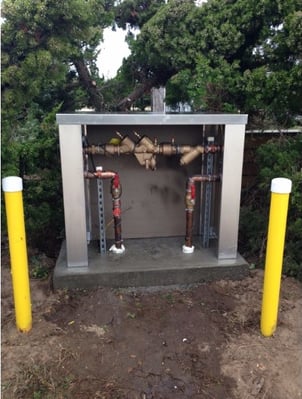There isn’t a part of the country that is immune from the potential of cross-connection, either backpressure or backsiphonage. To protect any combination of yourself, your family, your business or your community, having adequate countermeasures in place is essential.
But let’s be honest: in the absence of a uniform standard for defining hazards and cross-connections, words like ‘adequate’ or ‘essential’ are left open to interpretation, defined by states or local jurisdictions. The most the federal Environmental Protection Agency has to say about the matter is a 2003 control manual with an errata sheet published in 2011.
Where many might be tempted to follow the letter of the law in their local building or plumbing codes, we recommend going by the spirit of the law: If the potential for cross-connection and backflow contamination exists, codes are helpful, but compliance standards should only be the beginning.
First, know your state and local standards. State and local websites are a powerful resource, and many of them have made accessing the right materials easier than ever before. The American Water Works Association has their own best practices control manual that helps standardize what the federal government has left undefined. Otherwise, a search of your county, state and “cross-connection control” should get you exactly what you need (e.g., “Davidson Co Tennessee cross-connection control”) from both the county and state.
 Then, go one step beyond those standards. If your building requires an RPZ, install it above-ground and outside the building (and in an ASSE-rated Safe-T-Cover aluminum enclosure). If your plumbing infrastructure supports redundant countermeasures that aren’t mandated by local authorities, have them properly installed and inspected anyway. That’s peace of mind not only for you, but for those who use your facilities, and an extra safeguard protecting our most sensitive natural resource.
Then, go one step beyond those standards. If your building requires an RPZ, install it above-ground and outside the building (and in an ASSE-rated Safe-T-Cover aluminum enclosure). If your plumbing infrastructure supports redundant countermeasures that aren’t mandated by local authorities, have them properly installed and inspected anyway. That’s peace of mind not only for you, but for those who use your facilities, and an extra safeguard protecting our most sensitive natural resource.
It’s true that, in most cases, with changing standards comes ‘grandfather’ provisions. It’s better to stay current with the latest regulations and recommendations than to continue to roll the dice and hope a cross-connection event doesn’t compromise your waterworks system.
Borrowing a line from a health expert during the pandemic, we’ll never know if we did too much, but we’ll know if we did too little.
Our team at Safe-T-Cover can help address the challenges of keeping up with the latest recommendations. We’ve been challenging people to Think Outside the Vault for years. With our standard and custom design solutions, we can help you uphold higher standards for compliance and provide superior protection for backflow preventers, water pumps and other sensitive equipment serving your facilities and protecting the water supply.




